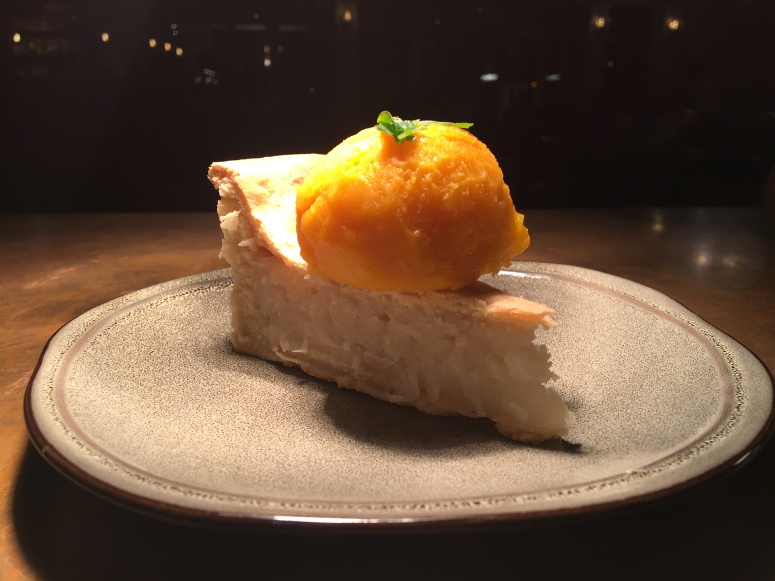
Great success stories sometimes spring up from the least expected places. Danilo “DJ” Tangalin Jr.’s story is one of such. DJ, former Executive Chef of JRDN Restaurant at Tower23, Pacific Beach is now the Executive Chef of Tidal, a waterfront resort restaurant in Mission Bay, San Diego. But it hasn’t always been snazzy restaurants with haute cuisine, fine wines and sweeping ocean views for this chef. Before stagiairing with renowned chefs around the US, like Andrew Carmelini at Locanda Verde, Eric Ripert at Le Bernardin, Daniel Patterson at Coi to name a few, his first stint in food was a far cry from these kitchens. In the late 90’s, DJ then a fledgling teen, helped out in his family’s roadside, no-frills carinderia in the Philippines. Carinderias are downscale eateries common everywhere in the country, also referred to as turo-turo (point-point joints). At DJ’s family eatery, taxi and bus drivers, students, passersby and mothers who weren’t bothered to cook pointed at the food they wanted from an assortment of cooked Filipino food in pots — for eat in or to go.

A carinderia/turo-turo in the Philippines
DJ has come a long way since then. He, with other prominent chefs of Filipino descent in San Diego, debunks the myth that Filipino cuisine is nothing more than downscale and unsophisticated food.

MFB: Tell us about your Filipino roots.
DJT: I was born and raised in Baguio City. In case you haven’t heard, Baguio is the summer capital of the Philippines because of its cooler climate. It’s often referred to as the city of pines because of the abundance of pines in the city.
MFB: When did you immigrate to the U.S.?
DJT: My family immigrated to the state of Hawaii in 2001. My dad moved there before us —around 1997 —before he petitioned the rest of the family.
MFB: What was the move to the US like for you?
DJT: I’m very glad it was Hawaii where we ended up first because of the rich Filipino community on the island, so there wasn’t a huge culture shock. I had just graduated from high school in the Philippines, but opted to repeat a year in Hawaii to study for the SAT to go to college. I was 16 when I moved to the US from the Philippines.
MFB: Does your heritage have any impact (good and bad) to your career?
DJT: It has a huge impact. Ilocanos are known to be great cooks. Our background and history comes from natives, whose cooking I consider as unblemished by other cultures. It is unique and indigenous.

LongShriLog by DJ: house-made longganisa, Baja shrimp, sweet potato purée, fried quail egg
MFB: What was the first job you held in food? What catapulted you to the Executive Chef position?
DJT: As far as just cooking non-professionally, it started pretty early. When my dad left for the US, my mom opened a carinderia (local eatery) a.k.a. turo-turo. I , together with my siblings, helped run it.
When we moved from Hawaii to New Jersey, I was actually a nursing major. I waited tables to help support myself during college. After a year, I switched my major to culinary.
About becoming an Executive Chef? I think it’s because I was always ready for the next step. I knew I had to develop my management skills as well as my financial understanding of the business. My mindset was locked into creating my own path and never just following somebody else’s footstep.

MFB: Please describe the Filipino and Filipino food scene in San Diego?
DJT: National City and Miramar have a vibrant Filipino food scene that has been here for ages. In 2016 into 2017, we have been making strides in mainstreaming Filipino food with the help of various publications. It is one of the hottest trending food conversations in town. We just need to keep going and spreading the good word.

MFB: In your opinion, how is Filipino food viewed by the general public in San Diego?
DJT: It definitely hasn’t enjoyed the same success as other Asian cuisines. Many know lumpia, pancit or adobo but it hasn’t grown beyond that. With the Philippines being an archipelago, we have so much more to offer and it is our job as Filipino chefs to share our culture and almost educate them about it.

MFB: Please tell us about your efforts to promote Filipino cuisine in the US?
DJT: As the Executive Chef of Tidal restaurant here in San Diego, I’ve been integrating Filipino dishes on the menu. Some are presented traditionally and some are not. As a chef, I have different ways of showcasing this dishes using modern techniques and plating designs.

MFB: Filipino Flavors was the first of its kind Filipino collaboration dinner in San Diego. What was it like for you?
DJT: It was very humbling and exciting. From the spark of the idea to our first menu meeting, the experience was truly one of a kind. The dinner was a huge success and there is already a huge demand for another one.
It was heartwarming to see a lot of Filipinos and encouraging to see a lot who weren’t. It was great to see everyone at the event and we are hoping to get the second one going.

MFB: Describe your perfect Filipino meal.
DJT: Oh man, I just want a nice bowl of arroz caldo (rice porridge). Growing up in Baguio, where it’s chilly and foggy at times, a nice bowl of arroz caldo is all you need.
Connect with DJ Tangalin:
Instagram: dj_tangalin (Named one of the “Top Five Food-Related Instagrams To Follow Right Now”on San Diego Eater)
Bringing people together through food and stories
Like us on Facebook / Follow us on Twitter.
http://www.twitter.com/mfb_anthology


